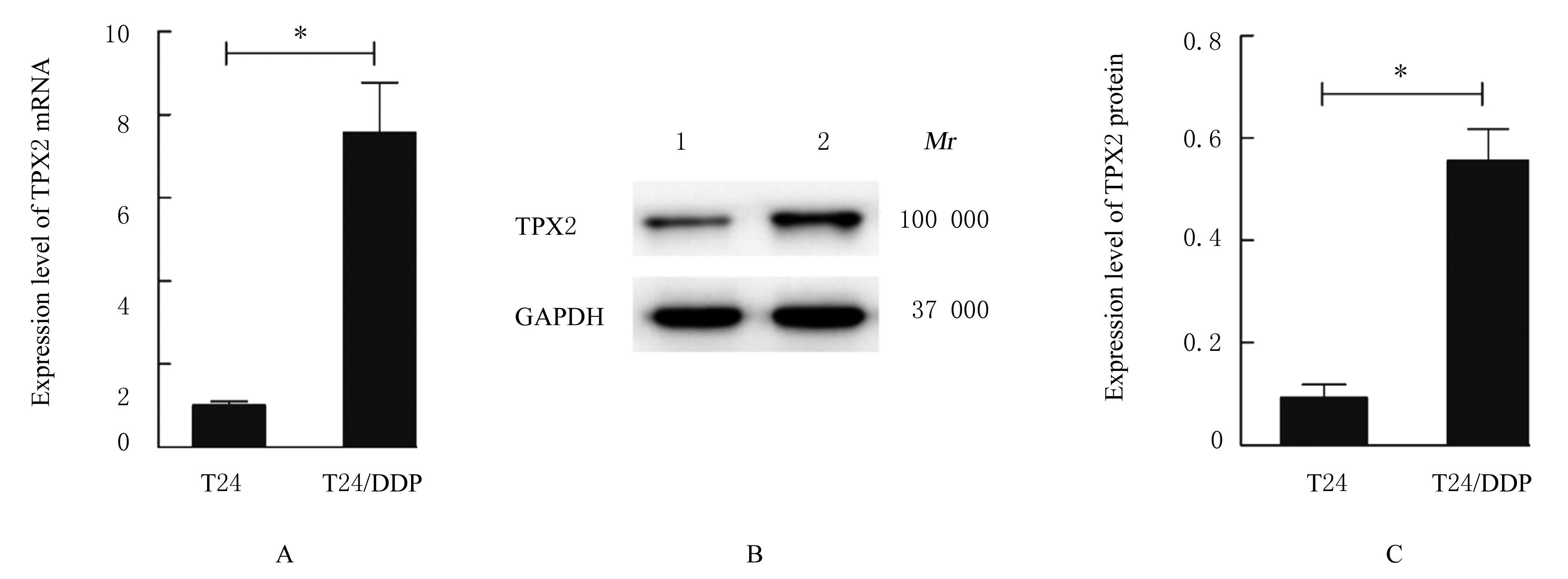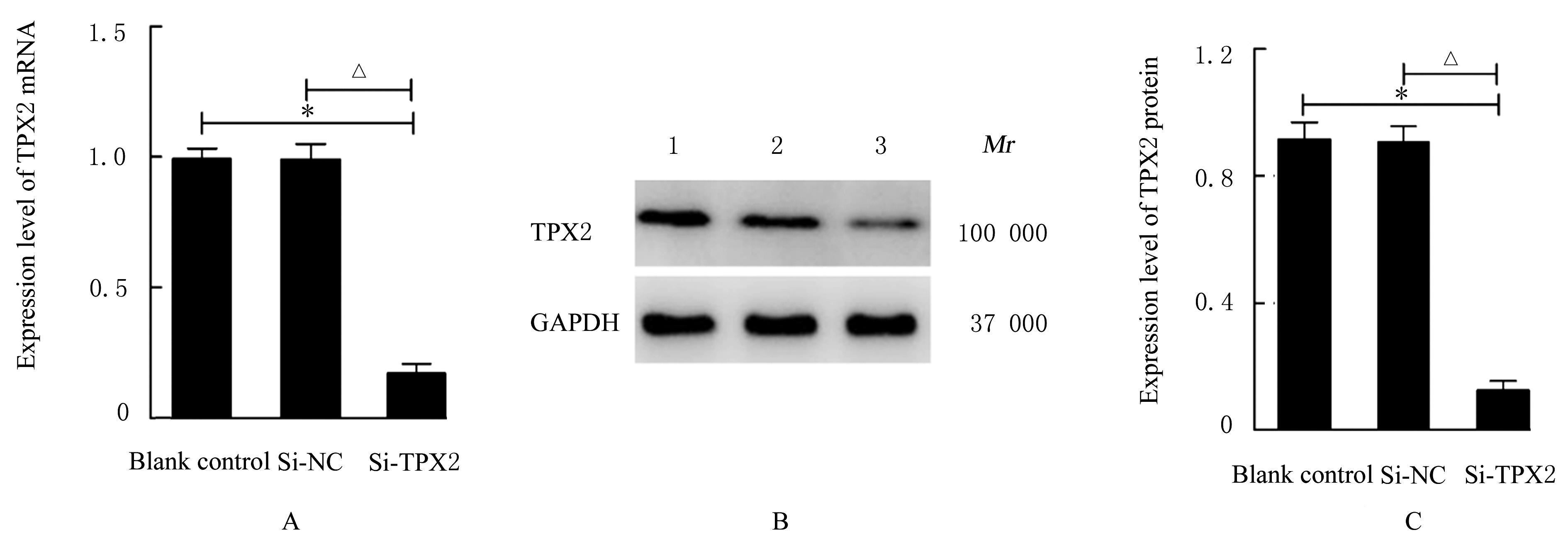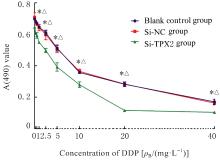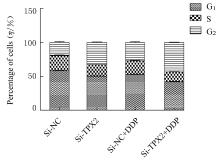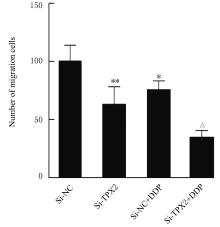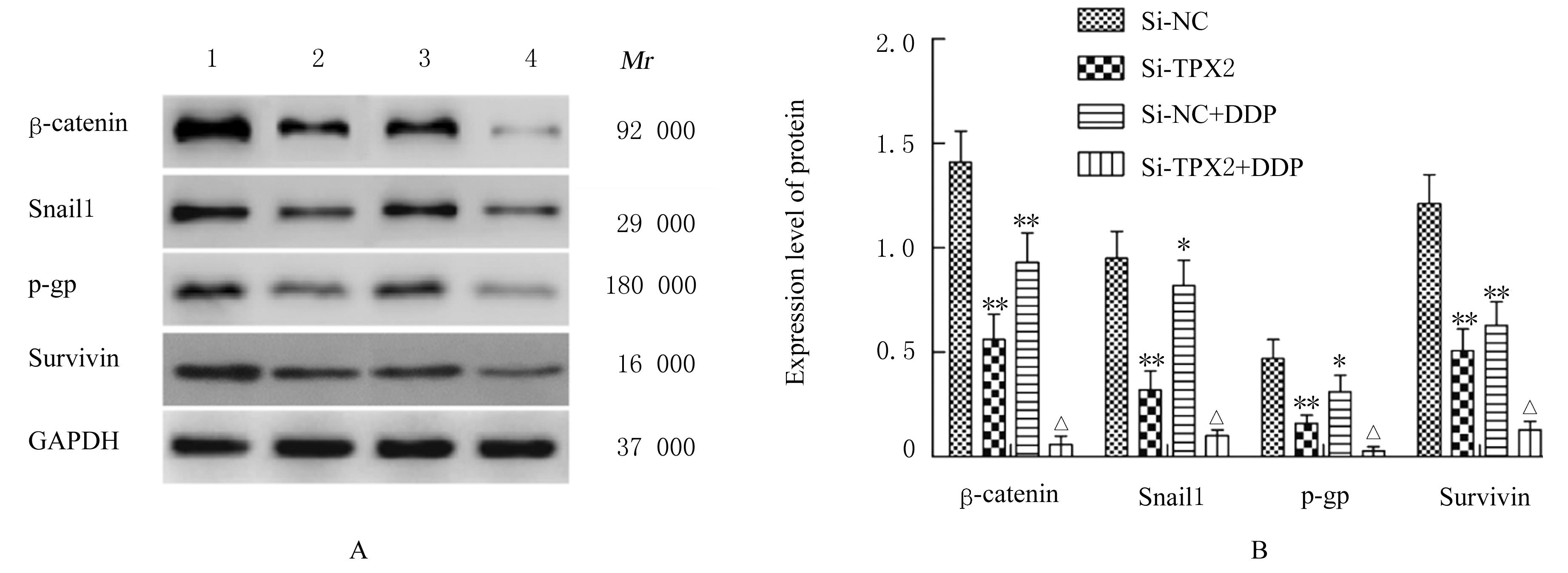| [1] |
Chunyan KANG,Xiuzhi ZHANG,Huicong ZHOU,Jie CHEN.
Effect of downregulating proline-rich protein 11 expression on drug resistance of esophageal cancer drug resistant cell EC9706/DDP and its mechanism
[J]. Journal of Jilin University(Medicine Edition), 2024, 50(1): 113-119.
|
| [2] |
Li JIN,Xiaohong ZHANG,Chaoyang HU,Fengzhi LI,Yongliang CUI,Yang LI,Qianqian LIU,Yanjun QIAO.
Effects of quercetin on growth and lung metastasis of transplanted tumor and cell invasion, and cell migration in human lung cancer A549 cells transplanted tumor model mice and their mechanisms
[J]. Journal of Jilin University(Medicine Edition), 2023, 49(4): 1018-1026.
|
| [3] |
Xiaomei HUANG,Hongwei WANG,Zhenyan HAN,Qiuyuan WEI,Sujing HUANG.
Effects of lncRNA GHET1 on biological behaviors of trophoblast cells in preeclampsia through Wnt/β-catenin signaling pathway
[J]. Journal of Jilin University(Medicine Edition), 2022, 48(5): 1324-1332.
|
| [4] |
Da LI,Yanhong JIA,Zebing ZHANG,Xiufeng HAO.
Preparation and evaluation of sodium alginate-locust bean gum interpenetrating polymer network hydrogel drug sustained-release system
[J]. Journal of Jilin University(Medicine Edition), 2022, 48(3): 809-817.
|
| [5] |
Lisong CHEN,Hui FANG,Hefei WANG,Chengyuan HE,Xiaodong GAI,Chun LI.
Effects of Notch1 signaling pathway on invasion and cisplatin resistance of lung adenocarcinoma cells and their mechanisms
[J]. Journal of Jilin University(Medicine Edition), 2021, 47(5): 1171-1177.
|
| [6] |
Yingjun REN, Hui ZHANG, Ying ZHOU.
Inhibitory effects of centromere protein U knockdown on self-renewal, cisplatin resistance and Wnt/β-catenin signaling activity in cisplatin resistant ovarian cancer cells
[J]. Journal of Jilin University(Medicine Edition), 2021, 47(3): 608-614.
|
| [7] |
Qi ZHAO,Changhai HE,Zhi WANG,Xuefeng WANG,Xiaofei LIU.
Inhibitory effect of ALKBH3 knockdown on growth, migration and tumor angiogenesis of bladder cancer cells and its mechanism
[J]. Journal of Jilin University(Medicine Edition), 2021, 47(2): 397-406.
|
| [8] |
Shuang MIAO,Na NI,Lijuan YANG,Yan WU,Xuelin LI,Hongliang DONG,Kaikai GONG.
Synergistic inhibitory effect of aaptamine and cisplatin on cisplatin resistant human lung adenocarcinoma A549/DDP cells
[J]. Journal of Jilin University(Medicine Edition), 2021, 47(1): 8-15.
|
| [9] |
CHEN Yan, PAN Dianzhu, LIU Zhong, MA Yanmei, ZHANG Lan.
Inhibitory effect of sileneing Frat2 on NCI-H1688 cells and its Wnt/β catenin signaling pathway mechanism
[J]. Journal of Jilin University(Medicine Edition), 2020, 46(04): 751-758.
|
| [10] |
LIU Jing, WANG Jing, GE Jing, FENG Yanping, FANG Guiying, WANG Xu, YANG Yanhong, LI Lin.
Effect of HeLa cell exosomes on migration and invasion and its mechanism of Wnt/ β-catenin signaling pathway
[J]. Journal of Jilin University(Medicine Edition), 2020, 46(04): 798-803.
|
| [11] |
WEN Qingyi, JIAO Miaomiao, XIE Xiao, PEN Jingyu, DONG Fengge, WEI Xue, YANG Ming.
Inhibitory effect of disulfiram combined with cisplatin on triple negative breast cancer MDA-MB-231 cells and its mechanism
[J]. Journal of Jilin University(Medicine Edition), 2020, 46(03): 523-529.
|
| [12] |
CHEN Zhouhua, GONG Hui, FENG Lei, XIAO Yujie, HUANG Lizhong.
Induction of LPS on epithelial mesenchymal transition in breast cancer MDA-MB-231 cells and its effect on β-catenin expression
[J]. Journal of Jilin University(Medicine Edition), 2020, 46(02): 309-315.
|
| [13] |
DONG Zhuo, LI Jiale, CHEN Xiaoyi, WANG Rui, YI Junxuan, WEI Xinfeng, JIN Shunzi.
Effect of NRP1 gene knockout on process of radiation-induced pulmonary fibrosis and its mechanism
[J]. Journal of Jilin University(Medicine Edition), 2020, 46(01): 26-34.
|
| [14] |
FANG Hui, YANG Hongyu, MA Xuzhe, CHEN Lisong, GAI Xiaodong, LI Chun.
Effects of FOXP3 on cell proliferation and chemosensitivity to cisplatin in lung adenocarcinoma cells
[J]. Journal of Jilin University(Medicine Edition), 2019, 45(06): 1261-1266.
|
| [15] |
YU Yang, ZHANG Yuepei, WANG Runze, LIU Shibing, XU Lu, XU Ye.
Influence of CoCl2 in cisplatin sensitivity of human ovarian cancer SKOV3 cells
[J]. Journal of Jilin University(Medicine Edition), 2019, 45(01): 1-6.
|
 ),Zhaohui WAN2
),Zhaohui WAN2

